More than 600 species of fishes, mammals, amphibians, reptiles and birds call Utah home. Below you will find some information on wildlife viewing opportunities in Utah's diverse climate. Click here to learn more about Utah's wildlife species.
Rockport State Park Winter Wildllife Viewing
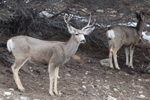 Each year the ice fishing, Yurt camping, and enjoying the wildlife at Rockport State Park is one of our favorite winter outdoor activities. Typically, we would share with you our ice fishing adventure or Yurt camping experience. However, this year we experienced something unusual with the wildlife. If you have been to Rockport in the winter months, then you have likely seen wildlife, whether on the highway headed towards the lake or driving thru the state park. In February 2019 we made our yearly ice fishing adventure to Rockport Reservoir. We arrived at the entrance just as the sun was making its debut over the mountain peaks.
Each year the ice fishing, Yurt camping, and enjoying the wildlife at Rockport State Park is one of our favorite winter outdoor activities. Typically, we would share with you our ice fishing adventure or Yurt camping experience. However, this year we experienced something unusual with the wildlife. If you have been to Rockport in the winter months, then you have likely seen wildlife, whether on the highway headed towards the lake or driving thru the state park. In February 2019 we made our yearly ice fishing adventure to Rockport Reservoir. We arrived at the entrance just as the sun was making its debut over the mountain peaks.
See Utah’s Stunningly Beautiful Kokanee Salmon
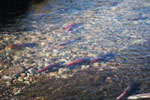 Vibrantly colored salmon crowding into streams and leaping up waterfalls may sound out of place in an arid climate, but kokanee salmon are well established in Utah. Kokanee are landlocked relatives of the sockeye salmon of the Pacific Coast, and they are just as exciting to catch as their saltwater kin. They’ve been stocked in several Utah waters, including Causey Reservoir, Porcupine Reservoir, Moon Lake and Strawberry Reservoir, which currently boasts the state record, a 6-pounder, caught in 1995.
Vibrantly colored salmon crowding into streams and leaping up waterfalls may sound out of place in an arid climate, but kokanee salmon are well established in Utah. Kokanee are landlocked relatives of the sockeye salmon of the Pacific Coast, and they are just as exciting to catch as their saltwater kin. They’ve been stocked in several Utah waters, including Causey Reservoir, Porcupine Reservoir, Moon Lake and Strawberry Reservoir, which currently boasts the state record, a 6-pounder, caught in 1995.
Kokanee Salmon Run Up The Strawberry River
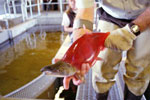 Each year in the beginning of September the Strawberry River turns bright red with spawning Kokanee Salmon. Viewing opportunities are available at the Strawberry visitors center via the “Discovery Trail” a long boardwalk that follows the river. When we first arrived we headed down the west side of the trail searching for the blazing red Kokanee with no luck. So we continued to make our way to what is called the fish catch house. There in long concrete basins were hundreds of bright red Kokonee that were caught earlier in the day. The rangers were catching the Kokanee, weighing, checking for spawning readiness, and sorting them between female and male fish. This was a huge treat for me; I have never seen anything like it.
Each year in the beginning of September the Strawberry River turns bright red with spawning Kokanee Salmon. Viewing opportunities are available at the Strawberry visitors center via the “Discovery Trail” a long boardwalk that follows the river. When we first arrived we headed down the west side of the trail searching for the blazing red Kokanee with no luck. So we continued to make our way to what is called the fish catch house. There in long concrete basins were hundreds of bright red Kokonee that were caught earlier in the day. The rangers were catching the Kokanee, weighing, checking for spawning readiness, and sorting them between female and male fish. This was a huge treat for me; I have never seen anything like it.
Condors in Zion National Park / Southeastern Utah
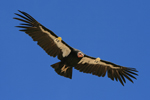 Though once on the brink of extinction, one of the world’s largest birds is slowly rebuilding its population in Utah. And the area in and around Zion National Park is playing a key role in the condor success story. To see a condor in flight is stunning. With a wingspan of nearly 10 feet, they’re like small aircraft. They can reach speeds up to 50 miles per hour and travel hundreds of miles in a single day. “The condors are spreading into southeastern Utah,” says Brian Higbee, a Utah resident who participates in condor conservation efforts. “Strictly scavengers, they feed in ranching areas and in the mountains where elk, deer, bighorns and moose live, and where ranchers take their herds for summer feed.
Though once on the brink of extinction, one of the world’s largest birds is slowly rebuilding its population in Utah. And the area in and around Zion National Park is playing a key role in the condor success story. To see a condor in flight is stunning. With a wingspan of nearly 10 feet, they’re like small aircraft. They can reach speeds up to 50 miles per hour and travel hundreds of miles in a single day. “The condors are spreading into southeastern Utah,” says Brian Higbee, a Utah resident who participates in condor conservation efforts. “Strictly scavengers, they feed in ranching areas and in the mountains where elk, deer, bighorns and moose live, and where ranchers take their herds for summer feed.
Utah Bald Eagle Day
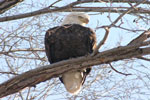 Each year during the month of February the Utah Division of Wildlife Resources holds its annual Utah Bald Eagle Day. This year starting on Feb. 2, 2019 you will have a chance to not only see these majestic birds of prey, but learn more about them by attending one of the five viewing locations across the state. Bald Eagle Day is a fun free outdoor activity to be enjoyed by all.
Each year during the month of February the Utah Division of Wildlife Resources holds its annual Utah Bald Eagle Day. This year starting on Feb. 2, 2019 you will have a chance to not only see these majestic birds of prey, but learn more about them by attending one of the five viewing locations across the state. Bald Eagle Day is a fun free outdoor activity to be enjoyed by all.
The Tracy Aviary
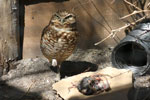 The Tracy Aviary provides a sanctuary for birds of many species from all around world. Native birds to Utah also find refuge at the Aviary and the surrounding Liberty Park. These wild birds are attracted to the water features, large trees, and the relative safety of the park. The Tracy Aviary offers 11 exhibits sure to captivate the young and the old. As you enter the park the first attraction is the duck feeding pond. The Mallards, Golden-Eyes, Redheads, and Teals will be waiting for you to throw them a treat. On our visit the park staff was feeding the Pelicans; what a spectacle that was.
The Tracy Aviary provides a sanctuary for birds of many species from all around world. Native birds to Utah also find refuge at the Aviary and the surrounding Liberty Park. These wild birds are attracted to the water features, large trees, and the relative safety of the park. The Tracy Aviary offers 11 exhibits sure to captivate the young and the old. As you enter the park the first attraction is the duck feeding pond. The Mallards, Golden-Eyes, Redheads, and Teals will be waiting for you to throw them a treat. On our visit the park staff was feeding the Pelicans; what a spectacle that was.
The Living Planet Aquarium
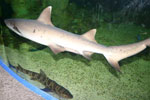 Sharks, stingrays, penguins, and sea turtles are just a few species that can be viewed at the Living Planet Aquarium. The aquarium is home to around 2,500 animals and 450 species of exotic fish, sharks, eels, snakes, reptiles, and more. Four main exhibits allow visitors to get up close to all these amazing animals. These exhibits include Discover Utah, Ocean Explorer, Journey to South America, and the Antarctic Adventure. Discover Utah houses some of the state’s threatened and endangered species such as June Suckers, and the least chub.
Sharks, stingrays, penguins, and sea turtles are just a few species that can be viewed at the Living Planet Aquarium. The aquarium is home to around 2,500 animals and 450 species of exotic fish, sharks, eels, snakes, reptiles, and more. Four main exhibits allow visitors to get up close to all these amazing animals. These exhibits include Discover Utah, Ocean Explorer, Journey to South America, and the Antarctic Adventure. Discover Utah houses some of the state’s threatened and endangered species such as June Suckers, and the least chub.
Salt Creek Waterfowl Management Area
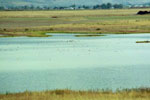 Located just a few miles past Corrine Utah is the Salt Creek WMA. This WMA was designed to provide habitat for Utah's Waterfowl species. Access to this area is restricted and only open to public use one week prior to the waterfowl hunting season. The Comptons Knoll wildlife viewing area is open year round for public use. This area provides view points over looking the wetlands. Throughout the year different species of ducks, geese, swans, shorebirds and songbirds use the wetlands for breeding, or as a resting place as they migrate through Utah.
Located just a few miles past Corrine Utah is the Salt Creek WMA. This WMA was designed to provide habitat for Utah's Waterfowl species. Access to this area is restricted and only open to public use one week prior to the waterfowl hunting season. The Comptons Knoll wildlife viewing area is open year round for public use. This area provides view points over looking the wetlands. Throughout the year different species of ducks, geese, swans, shorebirds and songbirds use the wetlands for breeding, or as a resting place as they migrate through Utah.
Utah Botanical Center
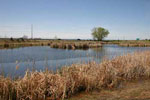 The Utah Botanical Center offers visitors many recreational activities such as fishing, wildlife viewing, walking the trail system, visiting the Rasmussen Teaching Garden and over 100 species of trees in the arboretum. The Botanical Center was created as a place of study and focuses on critical issues facing Utah and other states throughout the Intermountain west; a growing population and limited water supplies, diminishing public open space, and a shrinking resource base for native plants, wildlife and wetland areas.
The Utah Botanical Center offers visitors many recreational activities such as fishing, wildlife viewing, walking the trail system, visiting the Rasmussen Teaching Garden and over 100 species of trees in the arboretum. The Botanical Center was created as a place of study and focuses on critical issues facing Utah and other states throughout the Intermountain west; a growing population and limited water supplies, diminishing public open space, and a shrinking resource base for native plants, wildlife and wetland areas.
Snow Goose Festival Delta Utah
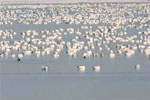 Each February thousands of Snow Geese arrive in Delta, Utah on their northerly migration from the Imperial Valley of southern California. They usually arrive in Delta around the 18th of February. The best time to view these beautiful birds is usually during the last week of February and the first week of March. Each year around this time the Delta City Chamber of Commerce holds the Annual Snow Goose Festival. This festival includes family fun for all ages and of course great views of the Snow Geese.
Each February thousands of Snow Geese arrive in Delta, Utah on their northerly migration from the Imperial Valley of southern California. They usually arrive in Delta around the 18th of February. The best time to view these beautiful birds is usually during the last week of February and the first week of March. Each year around this time the Delta City Chamber of Commerce holds the Annual Snow Goose Festival. This festival includes family fun for all ages and of course great views of the Snow Geese.
Bear River Bird Refuge Visitors Center
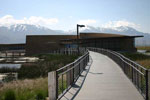 The Bear River Bird Refuge Visitors Center offers visitors young and old the opportunity to learn the importance of wetland environments. As you enter the visitors center you will be treated with a mural of bird species that can be found living or visiting the Bear River Bird Refuge. The center was designed to provide environmental education and focuses on young visitors. For example each child is given a "Search The Marsh" work sheet which helps the child identify different species of birds, bird tracks, eggs, wetland plants and more. Although this work sheet was designed for the kids, I had a great time learning about the wetlands as well.
The Bear River Bird Refuge Visitors Center offers visitors young and old the opportunity to learn the importance of wetland environments. As you enter the visitors center you will be treated with a mural of bird species that can be found living or visiting the Bear River Bird Refuge. The center was designed to provide environmental education and focuses on young visitors. For example each child is given a "Search The Marsh" work sheet which helps the child identify different species of birds, bird tracks, eggs, wetland plants and more. Although this work sheet was designed for the kids, I had a great time learning about the wetlands as well.
Bear River Migratory Bird Refuge
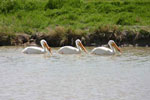 The Bear River Migratory Bird Refuge encompasses approximately 75,000 acres. It is the largest freshwater component of the Great Salt Lake ecosystem. The refuge lies along the eastern edge of the Pacific Flyway and the western edge of the Central Flyway, making it an important resting, feeding, and nesting area for birds (212 species) in both flyways. There are 72 species known to nest on the refuge. The importance of the refuge as a staging area for migratory waterfowl is evidence by the tremendous numbers of ducks (500,000) and Canada Geese (5,000) found on the refuge each fall.
The Bear River Migratory Bird Refuge encompasses approximately 75,000 acres. It is the largest freshwater component of the Great Salt Lake ecosystem. The refuge lies along the eastern edge of the Pacific Flyway and the western edge of the Central Flyway, making it an important resting, feeding, and nesting area for birds (212 species) in both flyways. There are 72 species known to nest on the refuge. The importance of the refuge as a staging area for migratory waterfowl is evidence by the tremendous numbers of ducks (500,000) and Canada Geese (5,000) found on the refuge each fall.
Bald Eagle Day Fountain Green Utah
 I arrived at the Fountain Green Fish Hatchery around 2:00 P.M. to participate in "Utah Bald Eagle Day". Upon arrival I took out my binoculars and spotted Bald Eagles instantly. I had no idea that about 25% to 30% of the western eagles spend the winter in Utah. More than 1,200 Bald Eagles have been counted in Utah during the past few years. During the 1960's the winter counts of Bald Eagles in the lower 48 states was less than 4,000. The Bald Eagle was instantly put on the "Endangered Species" list.
I arrived at the Fountain Green Fish Hatchery around 2:00 P.M. to participate in "Utah Bald Eagle Day". Upon arrival I took out my binoculars and spotted Bald Eagles instantly. I had no idea that about 25% to 30% of the western eagles spend the winter in Utah. More than 1,200 Bald Eagles have been counted in Utah during the past few years. During the 1960's the winter counts of Bald Eagles in the lower 48 states was less than 4,000. The Bald Eagle was instantly put on the "Endangered Species" list.
Fountain Green Fish Hatchery
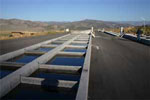 The Fountain Green Fish Hatchery is located on the North West end of Fountain Green Utah. After riding the Maple Canyon / Log Canyon ATV trail loop we were on our way back to Fountain Green it just so happens you drive right past the road that takes you to this hatchery. Being the curious individuals that we are, we decide to loop on up and visit. As you make your way up the road you will see the old hatchery which still holds a few fish, however if you continue up this road you will arrive at the new hatchery.
The Fountain Green Fish Hatchery is located on the North West end of Fountain Green Utah. After riding the Maple Canyon / Log Canyon ATV trail loop we were on our way back to Fountain Green it just so happens you drive right past the road that takes you to this hatchery. Being the curious individuals that we are, we decide to loop on up and visit. As you make your way up the road you will see the old hatchery which still holds a few fish, however if you continue up this road you will arrive at the new hatchery.
Hardware Ranch Wildlife Viewing Area
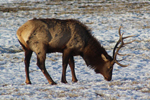 Hardware Ranch Wildlife Management Area (WMA) was purchased by the State of Utah in 1945 as a location to operate a winter feeding program for Rocky Mountain Elk. Today, the Utah Division of Wildlife Resources continues the feeding program but has expanded the mission of the management area. Hardware Ranch WMA provides habitat for many species of wildlife, promotes wildlife research and management, and provides visitors recreational wildlife education. On your visit to Hardware Ranch during the winter season, you will have the opportunity to ride a horse drawn sleigh/Wagon among the herd of Rocky Mountain elk.
Hardware Ranch Wildlife Management Area (WMA) was purchased by the State of Utah in 1945 as a location to operate a winter feeding program for Rocky Mountain Elk. Today, the Utah Division of Wildlife Resources continues the feeding program but has expanded the mission of the management area. Hardware Ranch WMA provides habitat for many species of wildlife, promotes wildlife research and management, and provides visitors recreational wildlife education. On your visit to Hardware Ranch during the winter season, you will have the opportunity to ride a horse drawn sleigh/Wagon among the herd of Rocky Mountain elk.